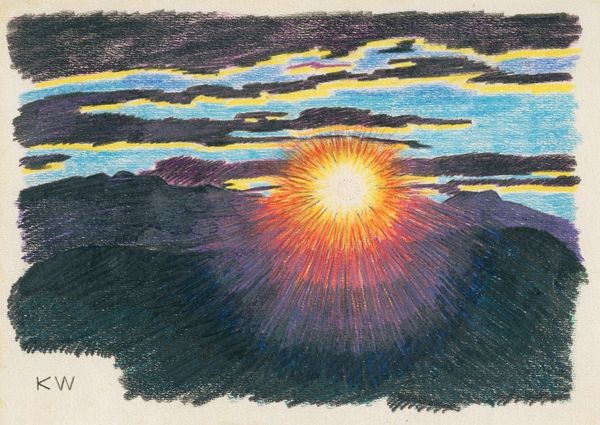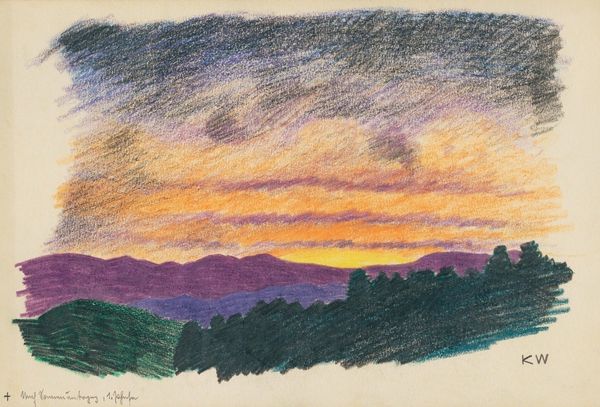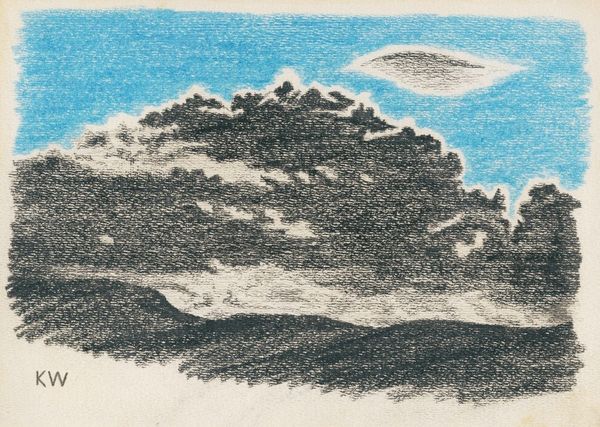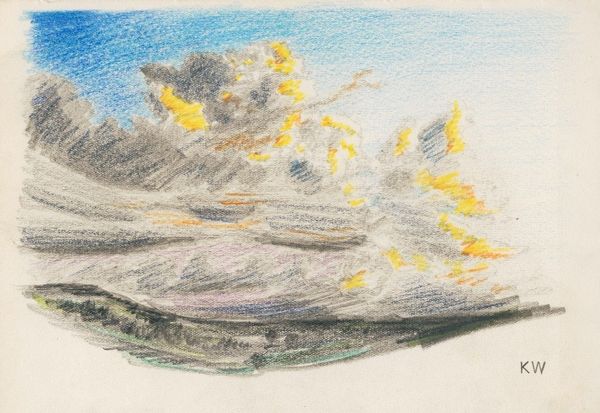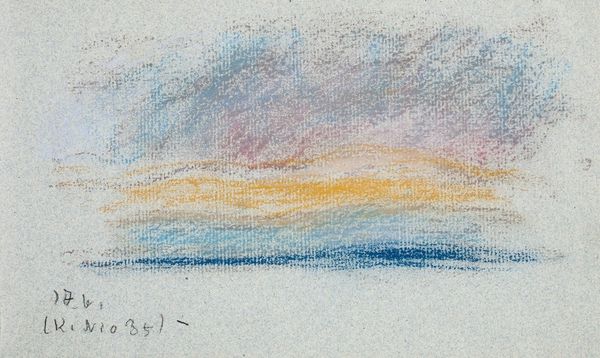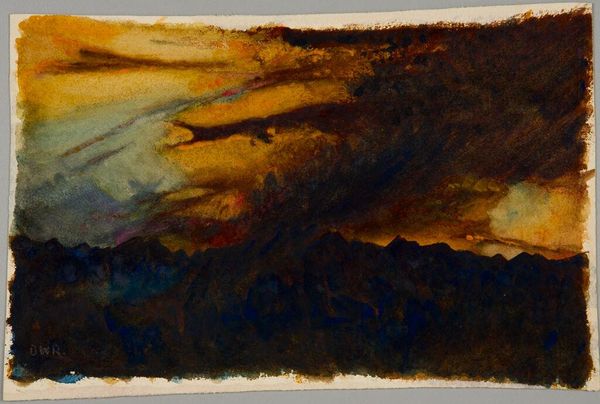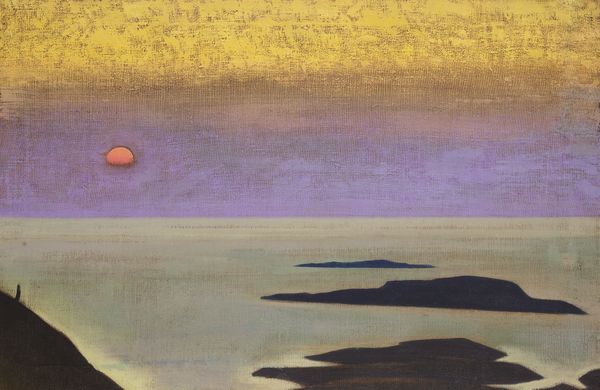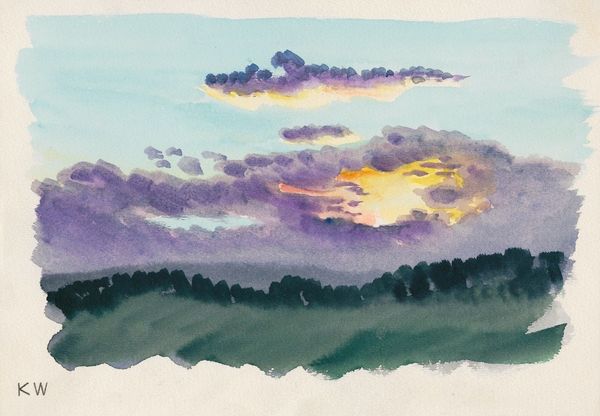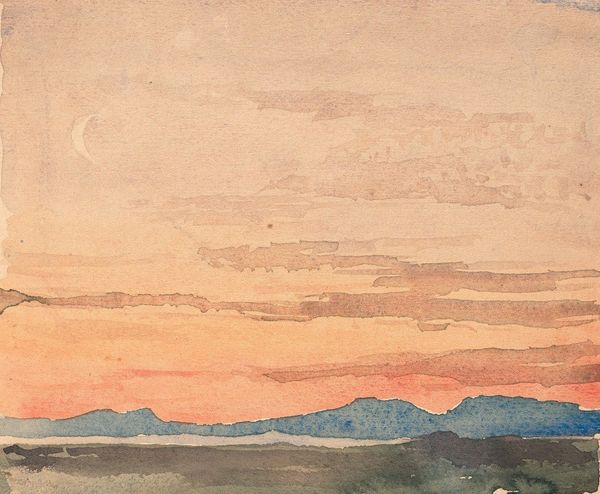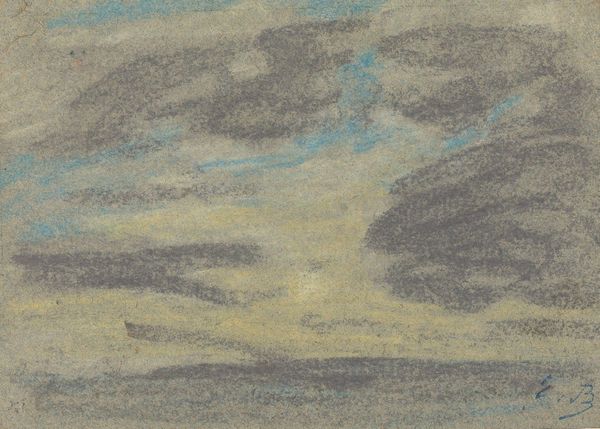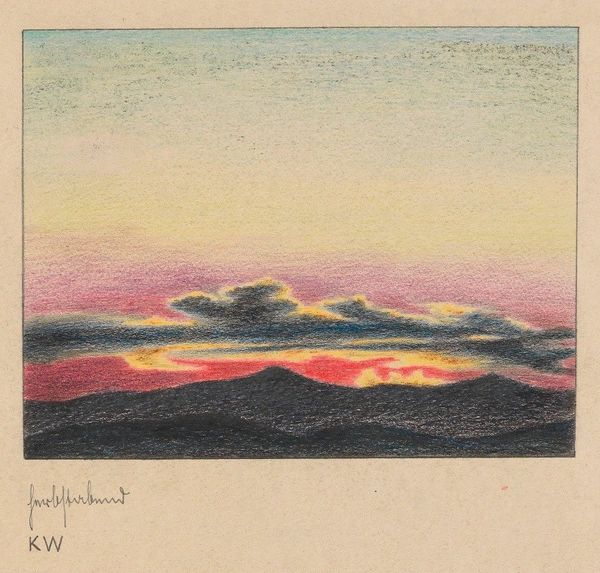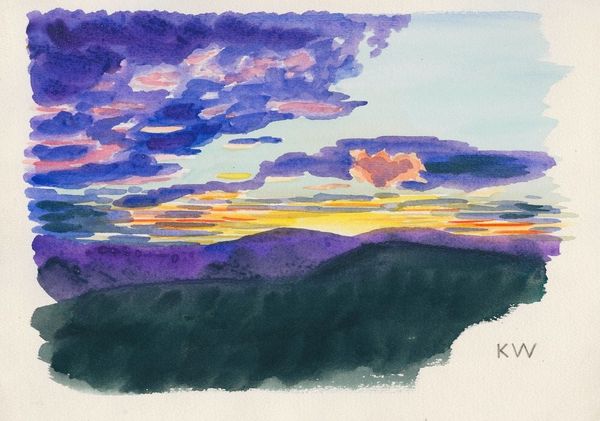
Copyright: Public Domain: Artvee
Editor: We're looking at Karl Wiener's "Herbstabend II," circa 1924, a colored-pencil drawing. The landscape has a slightly ominous feel, with that dark mountain range under a vibrant but heavy sky. What jumps out at you when you see it? Curator: It's fascinating how Wiener utilizes such modest materials – colored pencils – to evoke such a powerful, almost unsettling landscape. Consider the social context of its creation. This piece emerges from the aftermath of World War I in Germany. Expressionist artists frequently grapple with industrialization and question art's role, like Wiener, who pushes beyond conventional painting methods by emphasizing accessibility. Why colored pencils, right? What is he trying to achieve through his deliberate artistic choice? Editor: So, you’re saying the choice of something as accessible as colored pencils makes a statement itself? Instead of oil paints... Curator: Precisely! It democratizes the means of artistic production. The medium itself removes boundaries between high art and popular craft. We see readily available material elevated through Wiener's technique. Do you see this reflected in other Expressionist works? Editor: That’s a good point! I hadn't considered the medium's implications beyond just being a practical choice. Often, we get caught up in just composition, colors, technique but not enough on process! Curator: Exactly. Thinking about his materials makes us contemplate labor and social contexts that shift artmaking from elite practice to tangible experience. Editor: I’ll never look at a landscape the same way! Considering materials will change the way I understand it from now on! Curator: Great. Reflecting on the implications of those "humble" materials really deepens our connection to the art, doesn't it?
Comments
No comments
Be the first to comment and join the conversation on the ultimate creative platform.
